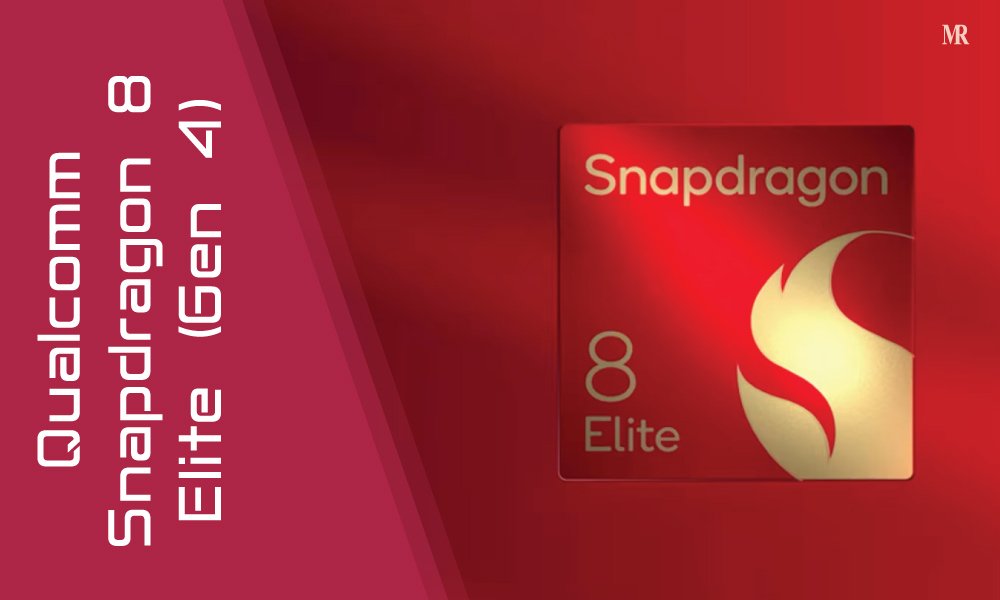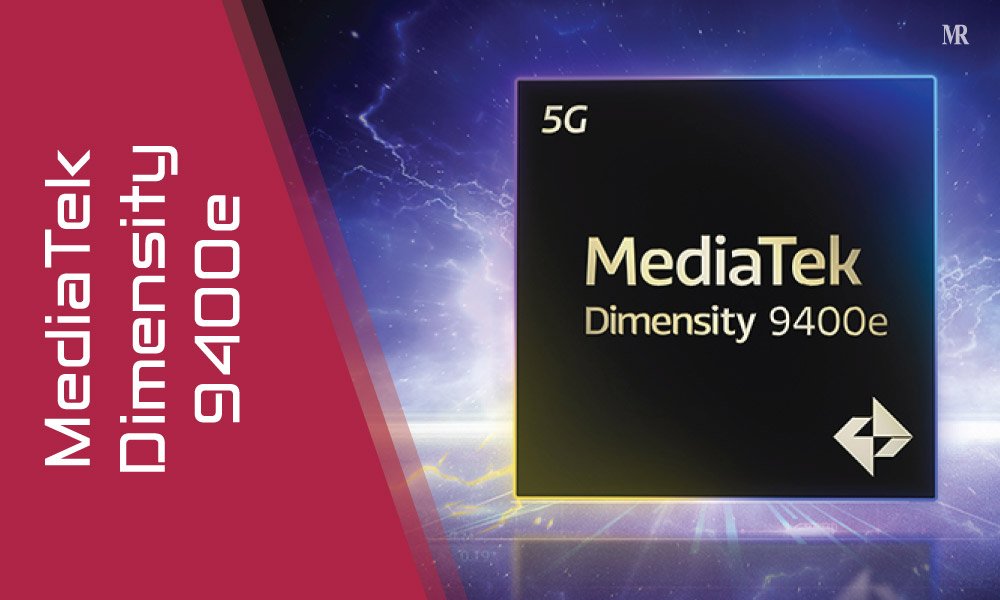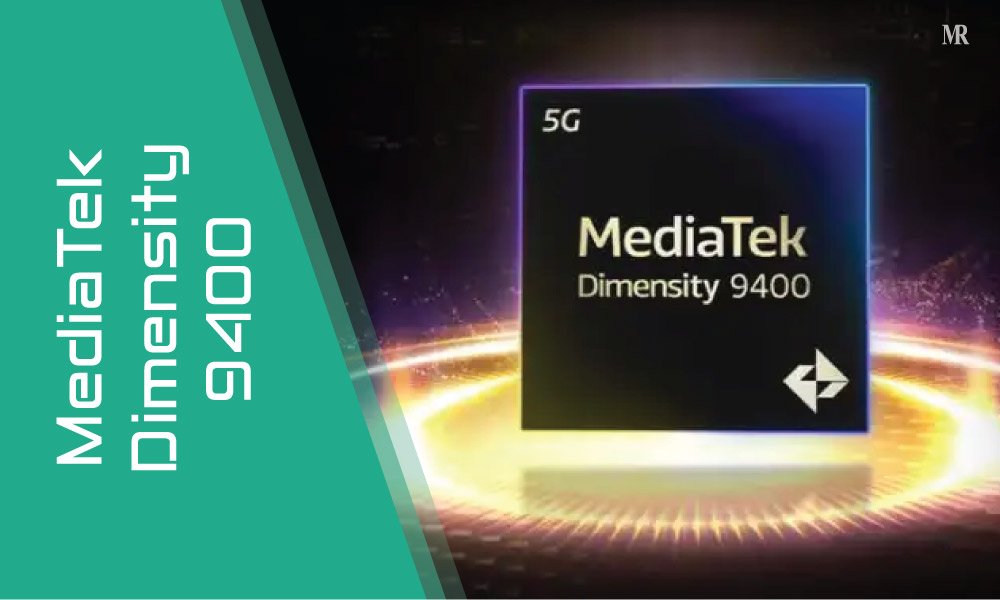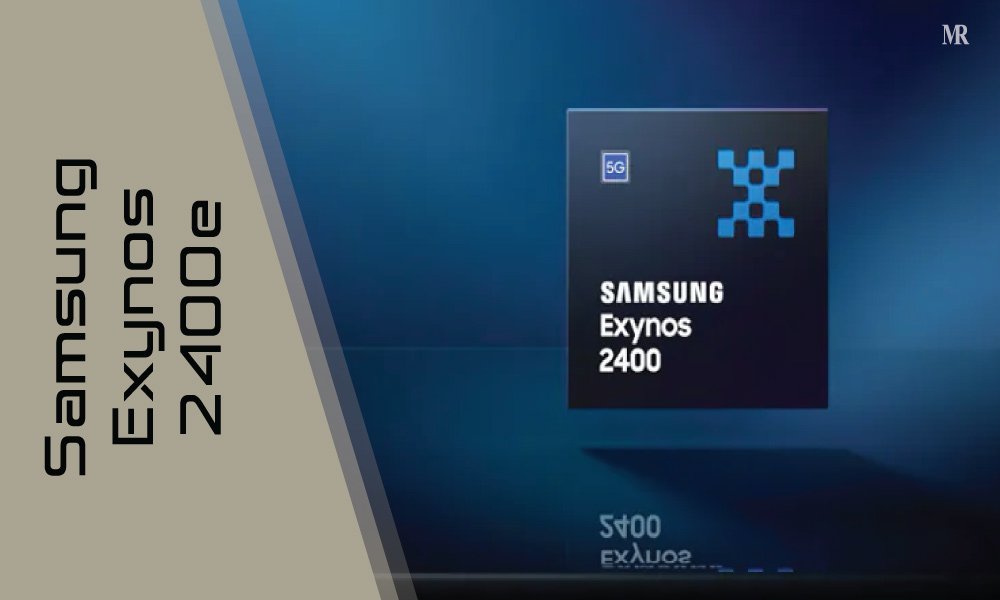In today’s tech-driven world, our smartphones are practically an extension of ourselves. We rely on them for everything, and we all crave that lightning-fast, super-smooth experience. So, when you’re on the hunt for a new smartphone, the most important things to consider is finding a device with one of the best processors for mobile.
You’ve likely heard tech enthusiasts discussing “SoCs,” “chipsets,” or “mobile processors”, right? But what exactly are they, and why are they so crucial for your phone’s performance?
What is a processor?
A processor, or central processing unit (CPU), is a crucial component in mobile phones (and virtually all computing devices). It serves as the brain of the device, performing calculations and executing instructions to enable various functions and processes.
In the context of mobile phones, the processor plays a prime role in handling tasks such as running applications, managing system operations, and processing user inputs. The performance of a mobile phone’s processor can impact its overall speed, responsiveness, and ability to handle multitasking.
Processors in mobile phones are designed to be energy-efficient, as battery life is a critical factor for mobile devices. They are often equipped with multiple cores (dual-core, quad-core, octa-core, etc.) to enhance performance and multitasking capabilities. Additionally, advancements in processor technology, such as the move to smaller nanometer manufacturing processes and the integration of specialized components like graphics processing units (GPUs), contribute to improved efficiency and overall device performance.
The Top 20 Best Processors for Mobile In 2025
Note: Tabular data here is referenced from the Nanoreview.net website.
| Processor | Geekbench 6 Score(Single-Core / Multi-Core) | Clock Speed |
| 1. MediaTek Dimensity 9400 Plus | 2927 / 9000 | 3730 MHz |
| 2. Qualcomm Snapdragon 8 Elite (Gen 4) | 3155 / 9723 | 4320 MHz |
| 3. Apple A18 Pro | 3582 / 9089 | 4050 MHz |
| 4. MediaTek Dimensity 9400e | 2233 / 7258 | 3400 MHz |
| 5. Apple A18 | 3466 / 8592 | 4050 MHz |
| 6. MediaTek Dimensity 9400 | 2874 / 8969 | 3630 MHz |
| 7. MediaTek Dimensity 9300 Plus | 2302 / 7547 | 3400 MHz |
| 8. Qualcomm Snapdragon 8s Gen 4 | 2154 / 6880 | 3210 MHz |
| 9. Apple A17 Pro | 2953 / 7441 | 3780 MHz |
| 10. MediaTek Dimensity 9300 | 2239 / 7538 | 3250 MHz |
| 11. Qualcomm Snapdragon 8 Gen 3 | 2193 / 7304 | 3300 MHz |
| 12. Apple A16 Bionic | 2627 / 6838 | 3460 MHz |
| 13. Samsung Exynos 2400 | 2196 / 6964 | 3210 MHz |
| 14. Samsung Exynos 2400e | 2099 / 6414 | 3110 MHz |
| 15. MediaTek Dimensity 8450 | 1617 / 6406 | 3250 MHz |
| 16. Apple A15 Bionic | 2332 / 5736 | 3230 MHz |
| 17. MediaTek Dimensity 8400 | 1571 / 6033 | 3250 MHz |
| 18. Qualcomm Snapdragon 8 Gen 2 | 1991 / 5299 | 3200 MHz |
| 19. MediaTek Dimensity 9200 Plus | 2090 / 5532 | 3350 MHz |
| 20. MediaTek Dimensity 9200 | 1949 / 5281 | 3050 MHz |
1. MediaTek Dimensity 9400 Plus
Kicking off our list is the MediaTek Dimensity 9400 Plus. This chip is designed for flagship performance, leveraging an “All Big Core” architecture with a leading Arm Cortex-X925 core. Manufactured on a 3nm process, it focuses on delivering top-tier AI performance with its NPU 890, enhanced power efficiency, and powerful graphics with the Immortalis-G925 GPU. It also boasts advanced connectivity like Wi-Fi 7 and extended-range Bluetooth.
2. Qualcomm Snapdragon 8 Elite (Gen 4)

Qualcomm’s Snapdragon 8 Elite (Gen 4) steps up the game significantly, boasting impressive GeekBench scores. This processor is all about raw power and intelligent processing, featuring custom Oryon CPU cores (a combination of high-performance Phoenix L and efficiency-focused Phoenix M cores). It’s built on a 3nm TSMC process to support next-generation AI experiences with its Hexagon NPU, console-level gaming with the Adreno 830 GPU, and professional-grade photography, positioning it as a leader in the Android space. It also integrates the Snapdragon X80 modem for top-tier 5G and Wi-Fi 7 connectivity.
3. Apple A18 Pro
Apple continues its tradition of powerful custom silicon with the A18 Pro. Expected to power the next gen of flagship iPhones, this chip is built on TSMC’s N3E 3nm process, delivering remarkable speed and efficiency. With a 6-core CPU configuration (2 high-performance Everest cores and 4 energy-efficient Sawtooth cores) and a 6-core GPU, alongside an advanced 16-core Neural Engine capable of 35 TOPS for AI tasks, the A18 Pro is set to provide an incredibly fluid and responsive experience. It also supports faster USB 3.2 Gen 2 speeds.
4. MediaTek Dimensity 9400e

The MediaTek Dimensity 9400e offers a slightly more accessible entry into the high-performance tier, reportedly a re-engineered version of a previous flagship design. While still incredibly capable, it’s designed to bring flagship-like features such as an all-big-core CPU architecture (featuring Cortex-X4 cores) and solid GPU performance to a broader range of devices. Users can still expect excellent gaming performance and robust AI capabilities from this chipset.
5. Apple A18
The standard Apple A18 chip is the fifth-best processor for mobile, also utilizing the advanced 3nm process technology. Expected in the non-Pro iPhone models, it will bring significant upgrades in speed, efficiency, and AI processing thanks to its capable 6-core CPU and a powerful Neural Engine. This ensures a top-notch user experience across Apple’s new smartphone lineup, with a likely 5-core GPU variant.
6. MediaTek Dimensity 9400

Closely following its “Plus” sibling, the MediaTek Dimensity 9400 is another powerhouse. It shares the advanced 3nm manufacturing process and the potent “All Big Core” design strategy, also featuring the Arm Cortex-X925. It’s engineered to handle demanding applications and heavy multitasking with ease, supported by the NPU 890 for AI tasks and the Immortalis-G925 GPU for a premium visual experience, along with Wi-Fi 7.
7. MediaTek Dimensity 9300 Plus
The MediaTek Dimensity 9300 Plus builds upon the success of its predecessor, offering refined performance with increased clock speeds on its All-Big-Core architecture (featuring Cortex-X4 and Cortex-A720 cores) and improved AI processing. It’s designed for flagship smartphones that demand consistent power for gaming, content creation, and AI-driven features. This chip continues to solidify MediaTek’s position in the premium market, utilizing a 4nm process.
8. Qualcomm Snapdragon 8s Gen 4

The Qualcomm Snapdragon 8s Gen 4 strikes an excellent balance between performance and power efficiency. Built on a 4nm process, it typically features a prime Cortex-X4 core along with other performance and efficiency cores. This chip is perfect for devices that need to handle everyday tasks smoothly while also offering solid gaming and AI capabilities with its Adreno GPU and Hexagon NPU.
9. Apple A17 Pro
The next entry on the list of the best processor for mobile phones is Apple’s A17 Pro, standing as an exceptional bionic chip. It is the first commercially available processor constructed on a cutting-edge 3nm process. Boasting a 64-bit, six-core CPU configuration, it includes two high-performance cores and four energy-efficient cores, achieving a maximum clock speed of 3.78 GHz. Moreover, the A17 Pro incorporates a 16-core Neural Engine, elevating its capabilities in advanced machine learning and AI tasks. Currently, it is the best processor in the iPhone
10. MediaTek Dimensity 9300

A truly powerful chipset, the Mediatek Dimensity 9300 is an 8-core powerhouse built with 4-nm manufacturing technology and has outstanding specifications. Among its cores are 1 Cortex-X4 running at 3250 MHz, 3 Cortex-X4 cores at 2850 MHz, and 4 Cortex-A720 cores at 2000 MHz. The Mediatek Dimensity 9300 excels in benchmark scores and continues to be one of the best processor for Android mobile. With such powerful specifications, it remains one of the best processors for mobile in the segment. It has been recognized for its innovative all-big-core architecture.
11. Qualcomm Snapdragon 8 Gen 3
The Qualcomm Snapdragon 8 Gen 3 demonstrates high-end performance. This 8-core chipset also utilizes 4-nanometer process. The Qualcomm Snapdragon 8 Gen 3 remains an excellent mobile processor, known for its on-device AI capabilities powered by an upgraded Hexagon NPU and strong gaming performance from its Adreno GPU.
12. Apple A16 Bionic

The Apple A16 Bionic emerges as the successor to the A15 Bionic. Manufactured on a 4nm process (TSMC N4P), this chip features a 6-core CPU configuration comprising two high-performance “Everest” cores (up to 3.46 GHz) and four high-efficiency “Sawtooth” cores. It continues to deliver impressive performance in various iPhone models, showcasing Apple’s strength in chip design and its 5-core GPU. This chip was notably featured in the iPhone 14 Pro series and later in standard iPhone 15 models.
13. Samsung Exynos 2400
Samsung’s Exynos 2400 is one of the best processor for mobile, especially in markets where Samsung devices feature their in-house chip. It packs a deca-core (10-core) CPU built on Samsung’s 4nm LPP+ process, aiming for improved performance and efficiency for flagship Galaxy experiences. A standout feature is its Xclipse 940 GPU, based on AMD’s RDNA 3 architecture. This brings advanced graphics support, including ray tracing, for smoother visuals and better gaming performance.
14. Samsung Exynos 2400e

The Exynos 2400e is a variant of the main Exynos 2400, likely tweaked with changes in clock speed or configuration for specific device ranges or regions. It still uses the same 10-core CPU and AMD RDNA-based GPU, delivering solid performance for everyday tasks, demanding apps, and gaming, while maintaining efficiency.
15. MediaTek Dimensity 8450
The MediaTek Dimensity 8450 brings premium features to upper mid-range smartphones. While detailed architecture may vary, it’s generally built on a 4nm or 5nm node with a mix of powerful Cortex-A7xx cores and efficient Cortex-A5xx cores. It’s designed to offer a well-rounded performance—supporting smooth gaming, multitasking, and high-resolution displays and cameras—all while keeping power use efficient.
16. Apple A15 Bionic

Apple A15 Bionic is a powerful chip made by Apple for their iPhones and iPads. It’s in the iPhone 13 series, including the Pro models (which had a 5-core GPU variant versus 4-core in others), and the iPad Mini in 2021. The chip, built on a 5nm process, is still going strong in models like the iPhone SE (3rd generation) and standard iPhone 14. It’s like the brain of these devices.
17. MediaTek Dimensity 8400
Aimed at the upper mid-range segment, the MediaTek Dimensity 8400 delivers a great blend of power and efficiency. Typically featuring Arm Cortex-A78 and Cortex-A55 class cores on an advanced nm process, it’s built to support smooth gaming with HyperEngine gaming technologies, quick app responses, and reliable connectivity. This processor allows more affordable smartphones to offer experiences that were once reserved for premium devices.
18. Qualcomm Snapdragon 8 Gen 2

The Snapdragon 8 Gen 2 is a powerful and one of the best processor for mobile phones that pushes the boundaries of smartphone performance and capabilities. The Kryo octa-core CPU operates at a clock speed of 3.36 GHz. Furthermore, the processor incorporates the 7th Gen Qualcomm AI Engine, featuring a Hexagon Tensor Accelerator that enhances artificial intelligence capabilities.
19. MediaTek Dimensity 9200 Plus
The MediaTek Dimensity 9200 Plus is a high-performance mobile processor tailored for premium smartphones in 2025. Manufactured with a state-of-the-art 5nm process (TSMC N5P), this chipset operates at a clock speed of 3.35 GHz. Additionally, it keeps pace with the demands of high-speed connectivity, supporting both sub-6GHz and mmWave bands for ultra-fast mobile data speeds, particularly in 5G networks. The processor achieves a GeekBench score of 2094 for single-core performance and 5555 for multi-core performance.
20. MediaTek Dimensity 9200

The MediaTek Dimensity 9200 Plus is a high-performance mobile processor tailored for premium smartphones in 2025. Manufactured with a state-of-the-art 4nm process (TSMC N5P), this chipset operates at a clock speed of 3.35 GHz. Additionally, it keeps pace with the demands of high-speed connectivity, supporting Wi-Fi 7 and both sub-6GHz and mmWave bands for ultra-fast mobile data speeds, particularly in 5G networks. This chipset was known for pushing clock speeds to offer a performance edge with its Immortalis-G715 GPU. It was among the first to announce Wi-Fi 7 readiness.
Choosing the Right Mobile Processor for You
Looking at a list of specs and benchmark scores can be helpful, but picking the best processor for mobile for your needs goes a bit deeper. While GeekBench scores give a good snapshot of raw processing power, here’s what else to consider:
- Beyond Benchmarks:
High scores are great, but real-world performance, including how a chip handles heat and maintains speed over time (sustained performance), is crucial. Also, consider how well the processor integrates with the phone’s software.
- Platform Dynamics:
For iPhones, Apple’s A-series chips are your only (and excellent) option, known for tight hardware-software integration. If you’re seeking the best processor for Android mobile, you’ll mainly be looking at offerings from Qualcomm (Snapdragon) and MediaTek (Dimensity). Both are excellent, but Snapdragon often stands out for gaming and strong developer support, while MediaTek is catching up fast in raw power and AI features.
- The Rise of AI:
The Neural Processing Unit (NPU) is increasingly important. It powers features like advanced photo processing, real-time language translation, and smarter app performance. A more powerful NPU can make your phone feel more intuitive and capable.
- Gaming and Graphics:
If you’re a mobile gamer, pay close attention to the GPU (Graphics Processing Unit). Chipsets like Qualcomm’s Adreno and MediaTek’s Immortalis series are designed for rich, smooth visuals.
- Power Efficiency is Key:
The latest processor in mobile technology isn’t just about speed; it’s also about doing more with less power. A more efficient chip means longer battery life, which is a huge plus for any user. Look for chips built on smaller nanometer (nm) processes (like 4nm or 3nm), as they generally offer better power efficiency.
- Don’t Always Chase the Absolute Latest:
While the newest chip often boasts the highest specs, last year’s flagship processor can still offer incredible performance and might come in a more budget-friendly device. Consider your typical usage – do you need the absolute cutting edge, or will a still-powerful older chip suffice?
Ultimately, the best processor is the one that fits how you use your phone, whether you’re a heavy user, a gamer, a photo lover, or just need a reliable everyday device.
End Note
As we conclude our journey through the best mobile processors, here’s the key takeaway: this is a fast-moving industry.
Our rankings reflect the current top performers, but new advancements are always on the horizon.
Don’t just chase the latest processor in mobile; consider how its features align with your specific needs and budget.
Keeping an eye on these developments will help you to make the best choice for your next smartphone, so that you get a device that’s powerful and perfectly suited for you.












